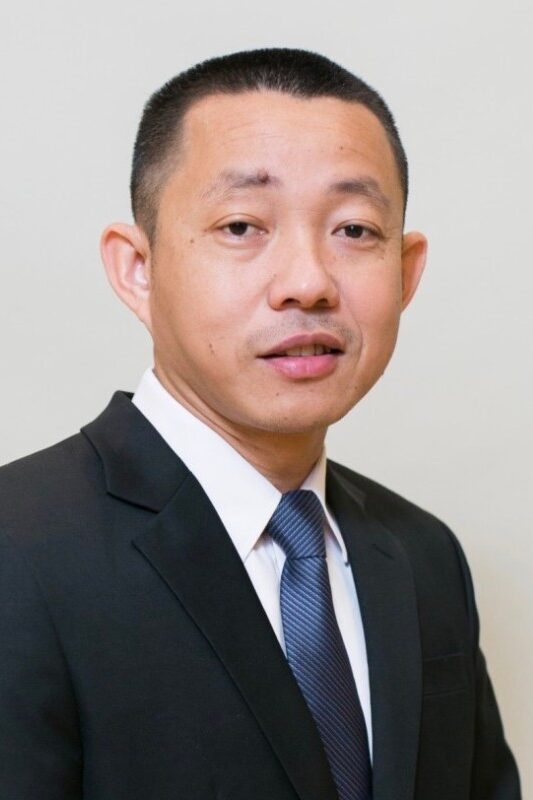Using animated SciTube videos to make research more impactful, accessible
Everyone’s heard of YouTube – but what about SciTube? Two Purdue University College of Education professors recently converted their research presentation into an animated video on this platform and received over 1,000 views in just a few days.
In 2023, Wayne E. Wright and Virak Chan, along with their colleague Sovicheth Boun of Salem State University, received the International Research Foundation (TIRF) for English Language Education’s James E. Alatis Prize for Research in Language Policy and Planning in Educational Contexts for their research article, Implementation of Multilingual Mother Tongue Education in Cambodian Public Schools for Indigenous Ethnic Minority Students. Then they decided to have the article made into an animated video, which SciTube published on Jan. 11, 2024.
“I have long been an advocate for open access, and am very interested in ways of making educational research more accessible to a broad audience beyond fellow researchers. But I had never thought about sharing research in the form of an animated video,” said Wright, professor and Barbara I. Cook Chair of Literacy and Language and the College’s associate dean for research, graduate programs, and faculty development.
The team’s research article provides a policy analysis of efforts by the Cambodian Government to adopt and expand multilingual education (MLE) programs for indigenous ethnic minority children in remote areas of the Northeastern provinces. The journal Educational Linguistics published their research in its inaugural issue, but SciTube introduced it to a wider audience.



Wayne E. Wright, Virak Chan, Sovicheth Boun
After the team won the Alatis Prize, SciTube contacted Wright about a possible video featuring their research. He browsed SciTube’s video selection and was impressed with the wide range of academic disciplines, quality of the videos, and number of scholars from top universities. He saw a SciTube video highlighting the work on learner-centered design for online engineering courses by another Purdue faculty member, Barrett Caldwell, professor of industrial engineering and aeronautics and astronautics.
“I reached out to Barrett and he was very gracious in sharing his experience with the process, and especially in helping me consider the potential value of this form of scholarship dissemination,” Wright said. “He was instrumental in inspiring me to give it a try.”
Wright discussed the possible video with co-authors Chan and Boun, and they agreed to try it out.
“We chose SciTube because it has made peer-reviewed research understandable and widely available to a non-specialist audience in the form of a scientific video publication,” explained Chan, clinical associate professor of literacy and language. “SciTube is known to use 2D animation to create short, engaging videos that explain complex scientific concepts in a way that anyone can understand. It also has a proven track record of creating high-quality videos that have been well-received by different audiences and increase the awareness of original peer reviewed research.”
The process took about five months and cost about $2,800.
“SciTube has professional scriptwriters, narrators, artists, and animators, and kept us involved at every stage of production. They were very responsive to our feedback and revision requests. SciTube hosted the completed video on their own website, and shared it via their social media accounts on YouTube, Facebook, LinkedIn, and X,” Wright said.
Caldwell told Wright he’d weighed the costs for travel and presenting research at a research conference or paying a journal’s open access fee with the cost of making a SciTube video to be able to potentially reach even more people than a conference or journal. He felt the price was reasonable for the professional video production he received. He was able to review and approve each stage of the video production before it was completed and made public. “I was able to take advantage of the services of editors, copyrighters, storyboard artists, voice actors, animators, and website designers/operators,” he said.
Wright and Chan are both pleased with SciTube’s results. “We recommend working collaboratively with a professional video production service like SciTube as they can help add a polished touch to the presentation, ensuring a visually appealing and effective research summary video,” said Chan. “They use professional tools and techniques that contribute to a visually appealing and informative video, potentially increasing engagement and viewership.”
“This is the first time I was involved in the production of a video summary about the research,” Chan said. “I think a video summary of a research article can enhance accessibility, engagement, and communication. I also think it can serve as effective educational tools.”
“Our contacts in Cambodia and other scholars who work in this area really liked the video and hope it will be useful in continuing efforts to develop and expand multilingual education programs,” Wright said. “TIRF was also excited to see video in connection with Alatis Prize they awarded us, and had embedded the video on their own website.”
The bottom line? Impact, according to Chan. “This has led to a well-crafted research summary video and we hope this will help our research to become more impactful.”
More info:
Wright, W. E., Boun, S., & Chan, V. (2024). How multilingual education helped Cambodia boost indigenous student enrolment [animated video]. SciTube. Available: https://scitube.io/how-multilingual-education-helped-cambodia-boost-indigenous-student-enrolment/
Barrett Caldwell SciTube videos and commentary:
Caldwell, B. (2023). A Learner-Centred Design for Online Engineering Courses [animated video]. SciTube. Available: https://youtu.be/6J8LLspjjQk
Caldwell, B. (2023). Developing Effective Chronic Care for Patients with Traumatic Brain Injury [animated video]. SciTube. Available: https://youtu.be/fRgI7mCdXHI?feature=shared
Caldwell, B. (2023). “Paying for It.” Grouper Lab blog
Sources: Wayne E. Wright wewright@purdue.edu; Virak Chan chan201@purdue.edu; Barrett Caldwell bcaldwel@purdue.edu